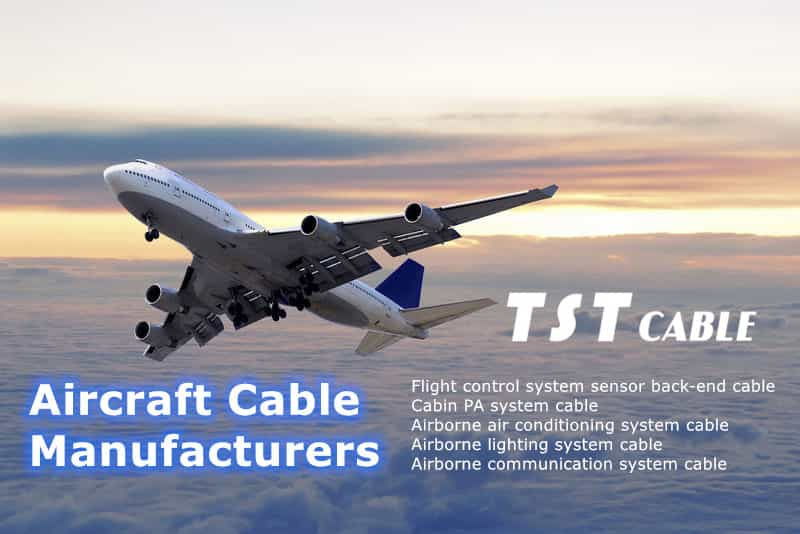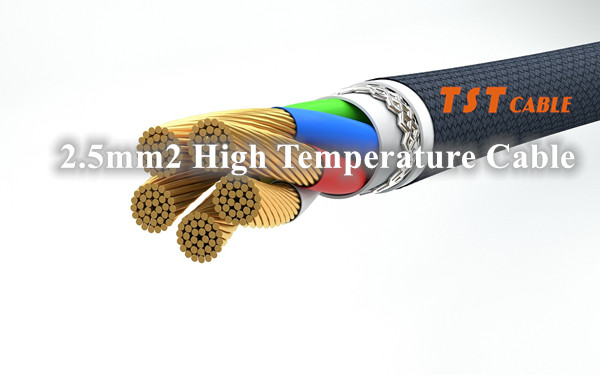The aircraft communication system is used for speech (voice) communications and also for data communications.
The communication system in aircraft is used for communication between the crew members and between crew members and ground personnel. It is also used to communicate with the passengers, other aircraft, and ground stations (both speech and data).

Aircraft communications systems comprise the following:
Radio CommunicationHF System – For long-distance voice communicationsVHF System – For short-range voice communicationsRadio Management PanelsSELCAL System – For selective calling using HF and VHFSATCOM System – For satellite communicationACARS – For datalink communicationInterphone CommunicationFlight Interphone System – For internal cockpit communication and also with ground mechanics.Cabin Interphone System – For cabin crew or cabin crew/pilots communications.Service Interphone System – On ground only, for maintenance personnel only.Ground Crew Call System – To tell ground crew or flight crew there is a call.Passenger Address System – For passenger announcement from cockpit and cabin crew station.Audio Management SystemAviation communication is accomplished through the use of radio waves.
Radio waves are electromagnetic in nature and part of the electronic spectrum. The atmosphere is filled with these waves. Each wave occurs at a specific frequency and has a corresponding wavelength. The relationship between frequency and wavelength is inversely proportional. A high-frequency wave has a short wavelength and a low-frequency wave has a long wavelength.
The production and broadcast of radio waves do not convey any significant information. The basic radio wave is known as a carrier wave. To transmit and receive useful information, this wave is altered or modulated by an information signal. The information signal contains the unique voice or data information desired to be conveyed. The modulated carrier wave then carries the information from the transmitting radio to the receiving radio via their respective antennas. Two common methods of modulating carrier waves are amplitude modulation and frequency modulation.
A transmitter consists of a precise oscillating circuit or oscillator that creates an AC carrier wave frequency. This is combined with amplification circuits or amplifiers. The distance a carrier wave travels is directly related to the amplification of the signal sent to the antenna.
Other circuits are used in a transmitter to accept the input information signal and process it for loading onto the carrier wave. Modulator circuits modify the carrier wave with the processed information signal.
Essentially, this is all there is to a radio transmitter.
Antennas are simply conductors of lengths proportional to the wavelength of the oscillated frequency put out by the transmitter. An antenna captures the desired carrier wave as well as many other radio waves that are present in the atmosphere. A receiver is needed to isolate the desired carrier wave with its information.
The receiver also has circuitry to separate the information signal from the carrier wave. It prepares it for output to a device, such as speakers or a display screen. The output is the information signal originally introduced into the transmitter.
A transceiver is a communication radio that transmits and receives. The same frequency is used for both. When transmitting, the receiver does not function. The push-to-talk (PTT) switch blocks the receiving circuitry and allows the transmitter circuitry to be active. In a transceiver, some of the circuitry is shared by the transmitting and receiving functions of the device. So is the antenna. This saves space and the number of components used.
Transceivers are half-duplex systems where communication can occur in both directions but only one party can speak while the other must listen.
Antennas As stated, antennas are conductors that are used to transmit and receive radio frequency waves.
The ANO specifies the minimum numbers and types of radio equipment to be carried on aircraft. It is not uncommon to see several radios fitted with different ranges and uses. VHF (Very High Frequency) radio gives good short-range radio reception but is useless on long-distance line-of-sight communication. Here, ground effect radio transmission such as HF (High Frequency) would be used. More commonly these days satellite communication is the normal mode for long-range communication.
Radio signals are basically made up of a modulated carrier wave.
The radio transmitter generates an oscillation at the frequency of transmission, for example in the case of VHF this would be in the band of 118-135.975 MHz. This is known as the carrier wave because it ‘carries’ the audio information.
Onto this carrier wave is superimposed the audio signal from the microphone (speech). This process is called modulation. There are two methods of modulation – Amplitude Modulation (AM) and Frequency Modulation (FM).
The modulated Radio Frequency (RF) signal is sent to the antenna for onward transmission.
At the receiving end, the antenna picks up the modulated RF signal (probably quite weak by now). It passes this through the coaxial cable to the receiver, where it is amplified then de-modulated, then the audio signal alone is amplified for onward transmission to the speakers or headphones.
HF use was at one time essential for long-range communications, but with the advent of Satellite Communications (SATCOM), its use is becoming less common. However, it is still in use.
The high-frequency (HF) communication system supplies voice communication over long distances. It gives communication between airplanes or between ground stations and airplanes.
The HF system operates in the aeronautical frequency range of 2 MHz to 29.999 MHz. The system uses the surface of the earth and an ionized layer to cause a reflection (skip) of the communication signal. The distance between skips changes due to the time of day, radio frequency, and airplane altitude.
The HF communication radio uses frequency select and control signals to transmit and receive voice communication.
The HF radio modulates an RF carrier signal with voice audio from the flight interphone system. During the receive mode, the HF radio demodulates the RF carrier signal. This isolates the voice audio from the RF signal. The HF transceiver sends the audio to the flight interphone system.
The HF system operates in the frequency range of 2.000 MHz to 29.999 MHz.
The HF communication system has these components:
Radio control panelHF transceiverHF antenna couplerHF antennaVHF radio transmission is the most common system for short to medium-range communication. It provides good and clear communication that is easy to modulate and demodulate.
The very high frequency (VHF) communication system supplies communication over line-of-sight distances. It gives communication between airplanes or between ground stations and airplanes.
The VHF communication system supplies the flight crew with voice and data line-of-sight communication. The VHF communication system can be used to communicate between airplanes and between airplanes and ground stations.
The VHF communication radio is tunable in the frequency range of 118.000 MHz to 136.990 MHz. The VHF radio is used to transmit and receive voice communication.
The VHF communication system operates in the frequency range of 118.000 MHz to 136.990 MHz. The 8.33 kHz spacing is only available for these frequency ranges:
118.000 to 121.400121.600 to 123.050123.150 to 136.475The VHF communication system has these components:
Radio control panelVHF transceiverVHF antennaThe radio management panels (RMP) centralize radio communication (VHF and HF) frequency control. The radio communication frequencies are selected and managed using the RMPs.
Selective Calling (SELCAL) is used in conjunction with the aircraft‘s VHF and HF systems. The selective calling (SELCAL) system monitors all communication radios in the airplane. The system alerts the flight crew when it receives a ground call with the correct airplane code. This removes the need for continuous monitoring of the communication radios by the flight crew. The SELCAL decoder receives audio signals from the VHF and HF communication systems.
Airline radio networks supply communication between ground stations and airplanes.
For SELCAL operation each airplane has a different four-letter code. Each letter in the code equals a different audio tone. The ground stations send the applicable tones to call an airplane.
Each airplane has a different SELCAL code. A ground station transmits this code to communicate with an airplane. When the airplane receives its SELCAL code, flight compartment indications come on to tell the flight crew.
The selective calling system has a “SELCAL decoder” as the main component.
Satellite communications provide a more reliable method of communications using the International Maritime Satellite Organization (INMARSAT) satellite constellation which was originally developed for maritime use. Now, satellite communications, abbreviated to SATCOM, form a useful component of aerospace communications.
The INMARSAT satellites are placed in Earth’s geostationary orbit above the equator.
SATellite COMmunications (SATCOM) system uses similar technology to GPS.
The SATCOM system transmits and receives data and voice messages. The system uses satellites as relay stations for long distances. SATCOM is more reliable than the HF communication system because atmospheric interference does not have an effect on it.
The system has the satellite network, the ground earth stations (GES), and the aircraft earth stations (AES).
The satellite network does a relay of radio signals between the AES and the GES. Each GES is a fixed radio station that has interfaces with communication networks through ground links and the aircraft earth stations through the satellite. The AES is the SATCOM system on the airplane that has interfaces with different airplane communication systems and the ground earth stations.
The aircraft communications addressing and reporting system (ACARS) is a datalink communication system. It lets you transmit messages and reports between an aircraft and an airline ground station.
A message or report from the aircraft to the airline ground station is called a downlink. A message or report from the airline ground station to the aircraft is called an uplink.
ACARS automatically sends reports when necessary and at scheduled times of the flight to reduce crew workload.
These are typical ACARS reports:

Crew identificationOut, off, on, in (OOOI) timesEngine performanceFlight statusMaintenance itemsThe Flight Interphone System is for internal cockpit communication and also with ground mechanics.
The flight crew uses the flight interphone system to speak with each other and the ground crew. Flight and maintenance crews use the flight interphone system to get access to the communication systems. You can also use the flight interphone system to monitor the navigation receivers.
Cabin Interphone System Cabin PA System is for cabin crew or cabin crew/pilots communications.
Cabin interphone system Cabin PA System tells:
Flight compartment personnel that there is a call from the cabin attendants.Attendants that there is a call from the flight compartment or another attendant station.The cabin interphone system lets the flight crew and attendants call each other.
These are the calls that can be made:
Flight compartment to attendant stationsAttendant station to flight compartmentAttendant station to attendant stationAural and visual indications from the system tell the flight and cabin crew to use the cabin interphone.
You use the cabin interphone system to make these calls:
Pilot to attendantAttendant to pilotAttendant to attendantService Interphone System is for on-ground use only, and for maintenance personnel only.
The service interphone system permits telephone communication between ground crew, cockpit crew, and cabin crew when the A/C is on the ground.
The service interphone system provides telephone communication on the ground between the flight crew, the cabin crew, and the ground service personnel. In large aircraft like A320 and B737, usually, 8 to 10 service interphone jacks are installed at different locations on the aircraft. The service personnel uses them to speak to each other, the cockpit, and the attendant stations through handsets.
The service interphone system is for these personnel:
Flight crewCabin crewGround crewThe ground crew call system enables crew member-to-ground mechanic or ground mechanic-to-crew member calls.
The ground crew call system tells:
Flight compartment personnel that there is a call from the ground personnelGround personnel that there is a call from the flight compartment.It has also an aural warning function when the aircraft is powered by batteries for the systems given below :
APU fireADIRS powered by batteriesEquipment ventilation faultyPassenger Address System is for passenger announcement from cockpit and cabin crew station (flight attendant station).
The passenger address system does the distribution of announcements from the cockpit and each attendant station through all assigned passenger loudspeakers.
The passenger address Cabin PA System supplies the following audio to the passenger cabin and flight compartment:
Flight crew announcementsPre-recorded/stored announcementsBoarding musicChimesThe Cabin PA System has these components:
PA amplifierPassenger signs panelAttendant handsetCabin and lavatory speakersThe PA amplifier sets the priority for the audio inputs. Only one audio input signal at a time is processed.
The audio inputs come from these sources:
Passenger entertainment systemPRAMPilotsAttendantsThe PRAM (pre-recorded announcement machine) supplies music and announcement audio to the PA system.
The PA amplifier receives the audio inputs from the PRAM and sets the priority. The PA amplifier will process the audio from the PRAM when there are no crew announcements. When the crew makes an announcement, a PTT signal goes to the PRAM to stop its operation.
The PTT signal also goes to the passenger entertainment system to stop its operation and let the passengers hear the announcement.
The PA amplifier sets the priority of the input signal. These are the Cabin PA System audio priorities:
Priority 1 – announcement from the flight compartmentPriority 2 – announcement from an attendantPriority 3 – pre-recorded announcementPriority 4 – boarding music.The audio management system provides the means for using:
All the radio communication and radio navigation facilities installed on the aircraft:In transmission mode: it collects the microphone inputs of the various crew stations and directs them to the communication systems.In reception mode : it collects the audio outputs of the communication systems and the navigation receivers and directs them to the various crew stations.SELCAL system:Visual and aural indication of calls from ground stations equipped with a coding device used by the aircraft installation.Flight interphone system:Telephone links between the various crew stations in the cockpit.Telephone links between the cockpit and the ground crew from the external power receptacle.Certain calls:Visual and aural indication of the ground crew and the Cabin Attendants’ calls.
TST CABLE specializes in customizing cabin PA system wires and cables. If you have needs for Cabin PA System cable, you can contact TST CABLES.
Also available in:
English





